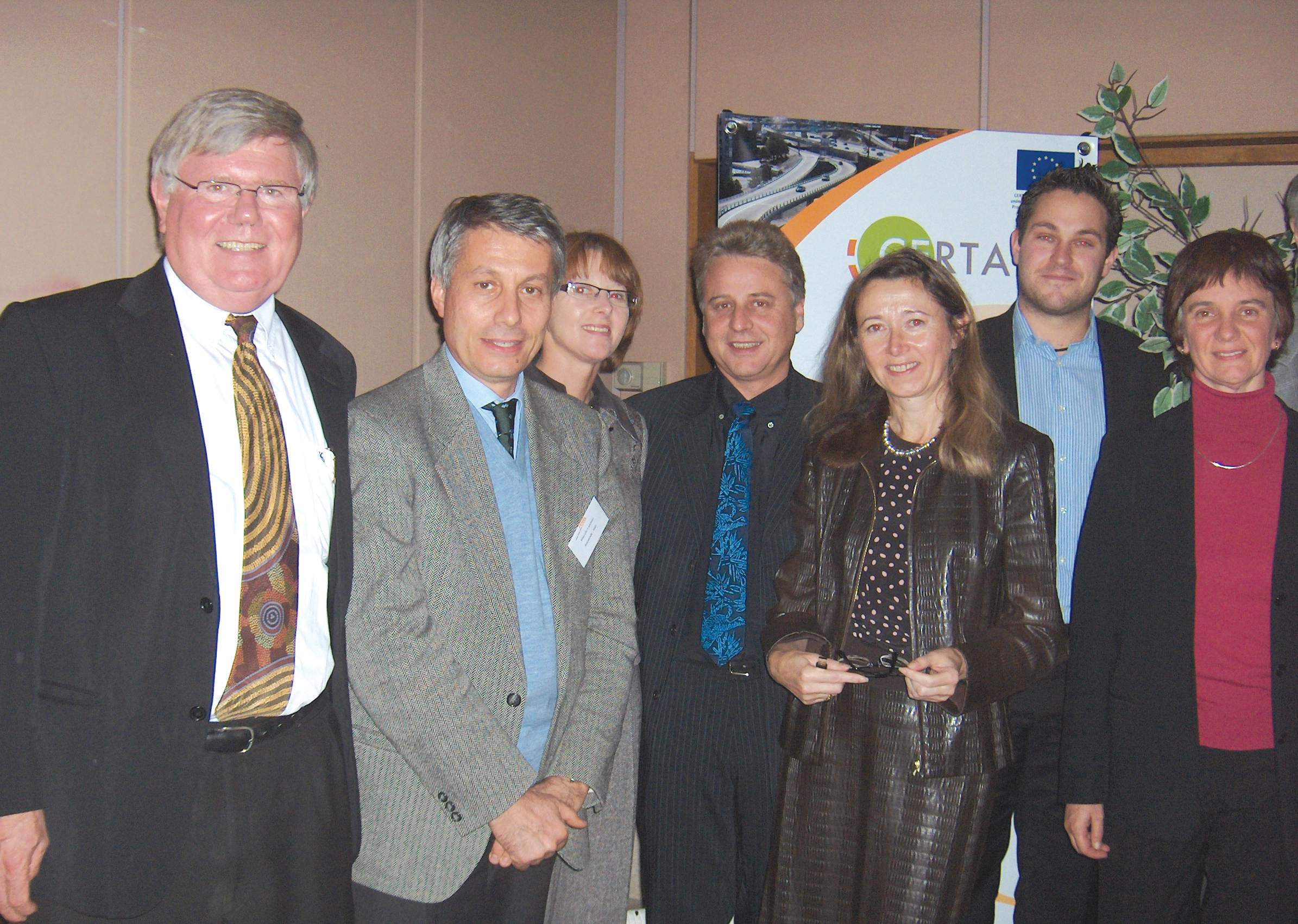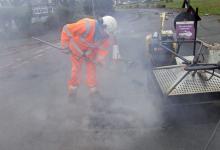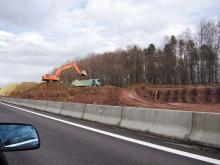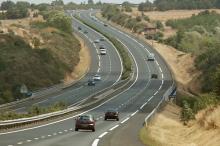
How will roads and bridges look in the future? Will they last longer and be safer, as well as offering the public a better environment? The answer could come from a research project offering solutions by identifying new concepts. NR2C ('New Road Construction Concepts,) is an initiative of FEHRL as part of the EU's Sixth Framework Programme. A workshop on the results of this and the parallel CERTAIN project took place recently in Brussels.
CERTAIN is funded by the
The NR2C project aims to develop long-term perspectives, concrete pilot projects and research recommendations, linking long-term visions and ideas to short-term actions. A vision, reflecting society's perception of road infrastructure in the year 2040, forms the basis of NR2C's aim to identify and specify the research required in the field of road engineering.
In order to get a good impression of the future trends, NR2C has developed three extreme settings or scenarios in which to place needs, demands and generic developments. These are:
-
Public Authority-based scenario. The state and other public authorities, rather than individual groups, are responsible for the major decisions involving finding the right balance between individual freedom and the need for rules and central direction.
-
Market-based scenario. Governments encourage a more market-responsive decision system and limit themselves to defining and controlling the frameworks. The dominant principle of society is 'if you are willing to pay, anything is possible'.
-
Sustainable society scenario. The 'green' attitude gained the upper hand during decision-making. Non-material values such as community spirit, spiritual development, ecological awareness and sustainability determine how society is structured.
The demand for road transport has grown continuously over the last 50 years and although populations in some member states are declining, the demand for road transport is still predicted to increase. For the 10 new European Union Member States, it is forecast to grow by 4% a year.
There will be pressure for these countries to move towards Western European standards of infrastructure development, road safety and environmental protection. According to International Road Federation (
These countries are already investing heavily in building new infrastructure. For example, Hungary spends 90% of infrastructure resources on the construction of new motorways. Similarly, in Slovenia, 27% of all bridges on the main road network, have been built in the last 15 years. However, a consequence of such policies is insufficient budget provision for maintenance of existing infrastructure.
The NR2C report states that civil infrastructure systems represent huge public investments and are expected to provide services for very long periods of time. Their use spans several generations during which society will experience dramatic changes. "This lengthy time span means that future developments in the transport of goods and people must be assessed and planned well in advance in order to make the right choices for today. Some current solutions might not resolve the problems of tomorrow. This is why predicting and identifying the needs of the future must become a more integral part of everyday work," says the report.
The status quo within Europe varies, particularly between eastern and central Europe on the one hand and western Europe on the other. A different starting point for deciding on the future does not necessarily mean that the image of the future in the various regions of Europe will differ too. The main differences will be equalised in 2040. In most European countries the generic developments will emerge sooner than later. They are: shortage of clean environment (including air pollution from cars); shortage of energy; shortage of space, and increased demand for mobility and individual demands.
The report points out that the road building market is more a closed than an open market, which is why the relationship between client and supplier is different from that in a consumer market. "Client and supplier, or commissioning authority and contractor, are connected to each other to a certain extent, certainly with respect to innovation and knowledge development," says the report. Consequently, all parties involved have to work together to guarantee continuity of developments in the sector. Because cooperation is so crucial, it goes without saying that the dominant partners involved in the road building industry should at least agree on and establish their roles and responsibility in development processes in advance.
The report says drawing up clear 'Rules of play for innovations' and adopting these roles and responsibilities is one of the most essential ways of bringing the research projects recommended in the present document into the implementation phase. These rules will help avoid frustration during the innovation process on all sides and prevent money and energy being wasted.
The workshop agreed that the road building industry is faced with huge challenges, including ambitious demands such as better, quicker and cheaper production, construction and maintenance. To minimise downtime of roads for maintenance activities, the overall quality of construction has to be upgraded. Since the time slots available for repair and rehabilitation works are becoming tighter and tighter, maintenance techniques have to be speeded up. Furthermore, the environmental regulations with respect to air pollution and noise emissions by traffic and the use of natural raw materials are becoming more stringent.
There is still plenty of progress to be made in the construction and maintenance of infrastructure. However, the progress being made in optimising existing concepts will soon no longer meet these demands and requirements and changes in concepts will be necessary. The sector must become more innovative and move faster towards re-designing existing concepts. The introduction of new and proven research technologies from other sciences such as physics and chemistry is important. Developments required include:
-
New age binder technology
-
Integrated models of urban (human) design
-
Lifetime engineering for roads
-
Asset management tools
-
Modular prefab. pavements
-
Low temperature asphalt with reclaimed asphalt
-
Bridge eco-assessment
-
TYROSAFE: optimising tyre-road interaction
-
Energy controlled pavements
The report points out that new intelligent in-car techniques, smart road and travel management systems will increase the capacity of roads as well as reduce the number of casualties. The road area will also be used more dynamically. The introduction of variable lane configurations during the day responds to changing demands at different times of the day. The need for low maintenance helps minimise 'downtime'.
Lifetime engineering affords challenges to road engineers and economic perspectives to road authorities. Lifetime engineering takes into account all transport-related costs by decision-making. The initial costs of structures will no longer be the only dominant factor; maintenance costs including the economic loss of traffic jams due to maintenance work will also play a role. Durable or long life infrastructure with low maintenance is the key to reliable infrastructure in the future. Because of the limitations of current construction materials to bear the increasing traffic loads, new materials and products will have to be developed, says the report.
"Engineering research must increasingly apply their technologies, such as micron and nano techniques, to discover the phenomena forcing the degradation of construction components. Understanding what is really happening in practice supports the proper design of new products and leads to performance-based testing. On this basis, requirements and contracts that are fully performance-based will be applied in the road construction sector."
To minimise the impact on the availability of the infrastructure, fast, hindrance-free maintenance techniques must be developed. Assembling prefabricated standard modules and components will reduce both the construction phase and the rehabilitation period. In many cases, the degeneration of infrastructures occurs at the surface (loss of stones, skidding, cracking).
A new line of surface treatment products must be developed to conserve and revitalise surfaces in the early stages of degradation, thus postponing replacement or more major maintenance work.
Mr. A. Vanelstraete, Belgian Road Research Centre, said there was a greater need for recycling to limit the excessive excavation of natural resources. At the moment there is a high amount of recycling material in the lower layers of a road surface, and less in the upper layers (tendency to re-use material from top to bottom). There is a need to increase the amount of reuse in upper layers Mr. Albert Daly of the Irish National Road Authority called for a well-targeted and organised research programme, aligned to business objectives. This should be prioritised on the basis of current needs and available funds.









